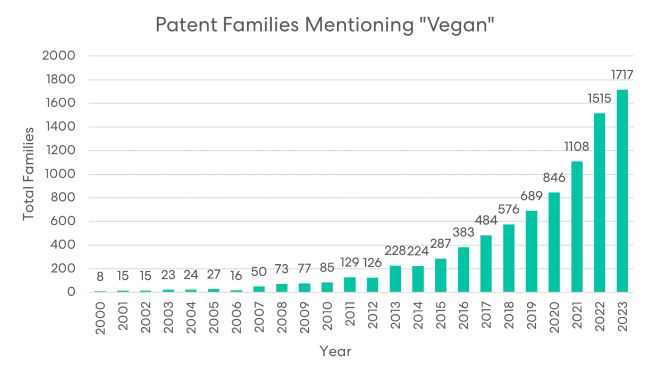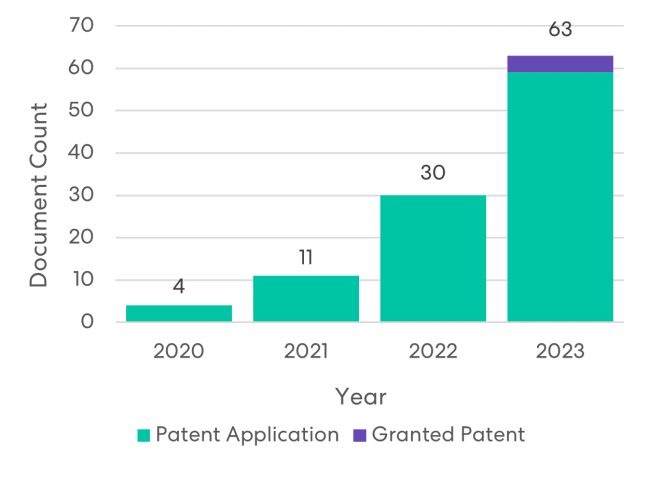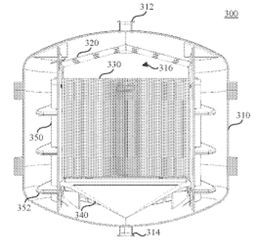An increased demand on world food supplies, concerns around global warming, and heightened ethical awareness towards meat consumption have all contributed to the worldwide drive to develop and consume alternative sources of protein. Our previous article which analysed the patent landscape of vegan technologies highlighted the dramatic growth in this sector. Indeed, many restaurants around the world, including the three Michelin Star and winner of the 2017 World's Best Restaurant Award, Eleven Madison Park, are turning to strictly-plant based menus in efforts to reduce meat consumption.1
Of the numerous technologies in the alternative protein sector, cultivated meat products offer a solution to the demands of customers, whilst overcoming the sustainability and ethical issues associated with meat consumption. Since the unveiling of the first cultivated beef burger in 20132, cultured meat has seen a marked increase in market size, with now over 150 companies and an all-time investment of around $2.8 billion as of 2022.3
What is cultivated meat?
Unlike plant-based meats which are made by processing the proteins from plants, cultivated meat contains genuine animal meat that is produced by harvesting then growing animal stem cells, such as fat and muscle cells.4 The industry aims to create products which are comparable to animal meat in texture, nutrition, and importantly taste, without the need to rear and slaughter animals. However, to achieve this and make the processes for cultivating meat affordable on scale, there are still challenges to overcome.
Advancement in cultivated meat technologies
A sharp rise in the number of patent applications mentioning "cultivated meat" or "cultured meat" illustrates the technological advances that are underway in the field.
A high proportion of these patents are directed towards methods of cultivating and harvesting animal cells, including US2022110347A1 and US11898127B1 by Upside Foods, which describe apparatus for scalable preparation of cultivated meat products and methods for growing and harvesting cells. The figure below depicts the cross-sectional side view of an apparatus for preparing cultured meat products, as described in US2022110347A1.
There has also been significant activity in the development of scaffolds, which provide structural support for the cultivated cells to grow on and help to achieve a desirable meat texture. Although many synthetic scaffolds have been developed, there have been numerous reports of edible, sustainable, and plant-based alternatives, including the 3D-printable protein-enriched scaffolds which Aleph Farms filed a patent application for in 2022. Furthermore, a recent study published in ACS biomaterials & Engineering details the use of glutenin as a scaffold for cultivated meat products, whilst another article by researchers at The University of Vermont discusses the use algae-based polymers.
The food-tech company Steakholder Foods was recently granted a patent (US11492583B2) for a method of physically manipulating a muscle tissue culture. This process mimics an animal's natural muscle development in order to achieve a high-quality structured meat with improved texture. The culture media and growth reagents which are employed to facilitate the growth of animal cells for cultivated meat are also undergoing various developments. A patent filed by Tufts University in 2023 describes the use of a serum-and animal-free culture media which provides improved growth capability for muscle cells. Innovations such as these may help to make producing cultivated meat more efficient and cost-effective.
Notwithstanding these advances, there has been significant resistance to cultivated meat, illustrated by Italian MPs voting to back a law banning its production, sale, and import. Although there are still hurdles to overcome before cultivated meat products become commonplace on our supermarket shelves, we are eager to sample the food as and when it become available and wait in anticipation of news regarding technological developments in the area.
Footnotes
1. Chef Daniel Humm on turning Eleven Madison Park vegan | Wallpaper
2. Growing the Future of Meat – Scientific American Blog Network
3. Cultivated meat and seafood | State of the Industry Report | GFI
The content of this article is intended to provide a general guide to the subject matter. Specialist advice should be sought about your specific circumstances.




